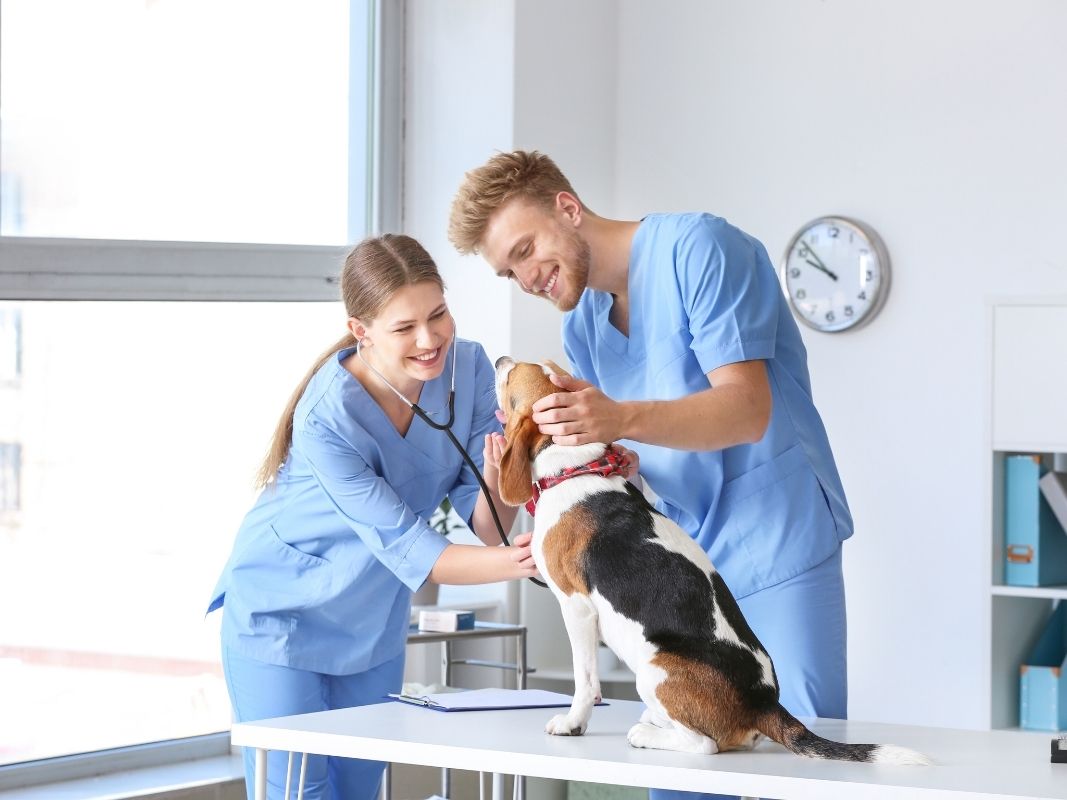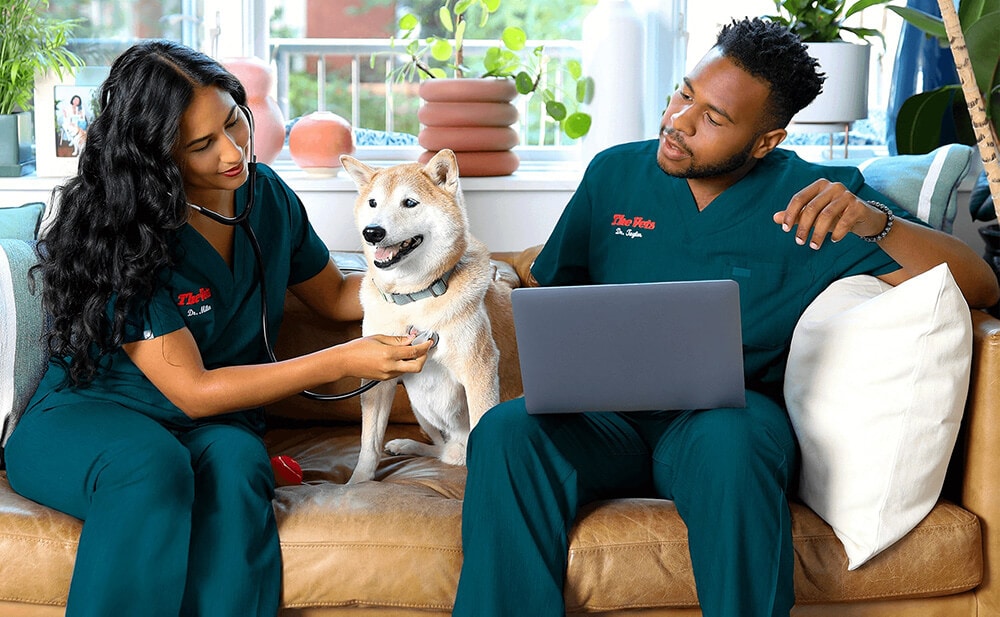A Veterinarian’s Insight Into Long-Term Outcomes of tplo surgery
A Veterinarian’s Insight Into Long-Term Outcomes of tplo surgery
Blog Article
Why Pet Rehab Is Vital: the Conveniences of Veterinarian Providers for Your Pet's Recuperation
Animal recovery is an essential element of healing for pet dogs facing injuries or specials needs. Veterinary services provide crucial support via tailored recovery plans that deal with private needs. These plans commonly consist of discomfort management, physical therapy, and nutritional advice. Comprehending the different aspects of pet rehabilitation can brighten its relevance in improving recuperation end results. What specific benefits do these solutions use, and exactly how can they change a pet dog's recovery journey?
Understanding Animal Recovery
Pet rehabilitation includes a series of therapeutic practices intended at recovering the health and capability of injured or disabled pets. This field integrates different techniques, consisting of physical therapy, hydrotherapy, and work treatment, tailored to fulfill the particular demands of each pet. Rehabilitation professionals assess an animal's condition, creating personalized therapy strategies that may include exercises to reinforce muscular tissues, improve wheelchair, and boost overall well-being. The process not only concentrates on physical recuperation however additionally addresses emotional and behavioral elements. Animals commonly experience stress and anxiety and stress and anxiety adhering to an injury, making mental health considerations important in rehab. By developing a supportive atmosphere, therapists can aid animals regain their confidence and adjust to their new conditions. Through routine sessions, pets can experience significant enhancements, ultimately resulting in a much better high quality of life. Generally, comprehending animal rehabilitation highlights its significance in promoting recovery and boosting the bond in between animals and their owners.
The Role of Pain Administration in Healing
Just how vital works pain management in the recuperation of damaged animals? It plays an essential role in facilitating healing and improving the general wellness of family pets. Correct discomfort monitoring not just reduces discomfort but also promotes movement, making it possible for animals to take part in rehabilitation activities necessary for recuperation. When pain is effectively handled, animals often tend to respond positively to treatment, bring about quicker rehabilitation outcomes.Veterinarians make use of different techniques to analyze and attend to discomfort, including medications, acupuncture, and alternate treatments. By tailoring discomfort administration methods to the individual needs of each animal, vets can guarantee that family pets continue to be tranquil and cooperative throughout their recovery journey. Moreover, decreasing discomfort assists lower stress, which can hinder healing and prolong recuperation times. To sum up, effective pain monitoring is vital for boosting the healing procedure and enhancing the lifestyle for hurt animals.
Physical Therapy Methods for Animals
Many physical treatment strategies are available to assist in the rehabilitation of pet dogs recouping from injuries or surgeries (canine tplo surgery). These techniques can boost movement, soothe discomfort, and advertise recovery. Healing workouts, as an example, aid reinforce muscle mass and enhance joint feature, enabling family pets to reclaim their physical abilities slowly. Hand-operated therapy, that includes massage and mobilization, can alleviate stress and improve blood circulation, contributing to a quicker recovery.Other methods such as passive variety of motion workouts encourage joint adaptability and lower rigidity. In addition, electric stimulation treatment may be used to promote nerves and muscles, advertising recovery and pain relief.Veterinary specialists commonly tailor these methods per family pet's specific demands, making sure a detailed rehab plan. By executing these physical therapy approaches, animals can experience improved quality of life and a more successful recovery from their ailments. The integration of these practices right into rehabilitation programs is crucial for perfect healing outcomes
Benefits of Hydrotherapy for Rehabilitation
Hydrotherapy offers significant benefits in pet rehab, particularly in enhancing mobility. This water-based treatment advertises pain relief while providing convenience to wounded or recovering family pets. Additionally, it promotes strength-building workouts that add to general physical recuperation.
Enhanced Movement Enhancement
As animals recuperate from injuries or surgical treatments, enhanced flexibility typically becomes a main goal of their recovery. Hydrotherapy works as an important device in attaining this purpose. Through water-based workouts, pets can take part in low-impact activities that help with joint mobility and reinforce muscular tissues without the stress of weight-bearing tasks. The buoyancy of water sustains their bodies, permitting enhanced variety of activity and mobility enhancement. Furthermore, hydrotherapy urges far better equilibrium and control, which are vital for recovering normal movement patterns. Regular sessions can lead to considerable progression in an animal's physical capabilities, eventually boosting their lifestyle. This approach not just aids in recovery but also advertises an extra energetic and satisfying way of life post-rehabilitation.
Pain Alleviation and Convenience

Remedy for discomfort is a crucial aspect of animal recovery, and hydrotherapy greatly contributes to this process. By using water's buoyancy, hydrotherapy reduces joint tension and eases pain throughout activity. This therapeutic method offers a relaxing atmosphere where animals can engage in gentle exercises without the full weight of their bodies influencing their recovery. The cozy water stimulates blood circulation, promoting recovery while also encouraging relaxation. Additionally, hydrotherapy sessions can be customized to fulfill the specific demands of the animal, making certain optimal convenience. As animals experience decreased discomfort and enhanced comfort degrees, their overall willingness to participate in rehab activities commonly improves, bring about a much more effective recovery journey. Subsequently, hydrotherapy serves as a critical tool in improving discomfort alleviation and comfort during rehabilitation.
Strength Building Workouts
Strength-building workouts play a crucial function in the rehabilitation procedure, with hydrotherapy offering special advantages. This type of treatment uses water resistance to boost muscular tissue stamina without placing extreme strain on the joints. The buoyancy of water sustains the family pet's weight, permitting more secure movement and raised variety of activity. Additionally, hydrotherapy can enhance cardiovascular health and wellness and advertise overall fitness, assisting in much faster recuperation from injuries or surgeries. The controlled environment additionally lessens the risk of reinjury, making it a perfect choice for pets calling for rehab. Regular hydrotherapy sessions can cause visible renovations in mobility, strength, and endurance, ultimately enhancing the family pet's lifestyle and capacity to return to normal activities.
Value of Customized Rehab Strategies
Customized rehabilitation plans are vital for addressing the distinct requirements of each pet, ensuring personalized treatment techniques. These strategies permit for reliable progression tracking and necessary modifications, fostering perfect healing end results. Additionally, an all natural technique can enhance the general well-being of the pet, promoting a more comprehensive rehab experience.
Individualized Treatment Approaches
While numerous recovery programs adopt a one-size-fits-all strategy, the distinct demands of each animal demand personalized treatment prepare for suitable recovery. Personalized rehabilitation strategies take into account numerous factors, including the pet's varieties, age, clinical history, and particular injuries or problems. By customizing treatments, vets can deal with each pet's unique challenges, making best use of the effectiveness of the recovery procedure. Embellished strategies might integrate various methods such as physical treatment, hydrotherapy, and therapeutic exercises, making sure that the therapy straightens with the pet's abilities and progress. In addition, tailored methods foster a stronger bond in between the animal and the caregiver, promoting a much more interesting and supportive recuperation atmosphere. Eventually, personalized treatment is important for accomplishing finest feasible results in pet recovery.
Progress Monitoring and Adjustments

Holistic Healing Strategies
Holistic recovery approaches are vital for efficient pet recovery, as they stress the importance of the best veterinarian near me customized therapy plans tailored to each animal's particular requirements. This technique thinks about the physical, psychological, and environmental aspects influencing recovery. Personalized rehabilitation strategies may include a mix of physical treatment, dietary counseling, and behavioral adjustments. By resolving these diverse elements, vets can improve the overall well-being of the pet and advertise a quicker recovery. Furthermore, such tailored techniques help with a deeper understanding of the family pet's one-of-a-kind challenges, resulting in extra effective treatments. Eventually, all natural recuperation approaches not only boost physical wellness but also add to the animal's psychological and emotional stability, making certain a detailed recovery experience.
The Influence of Nourishment on Healing
Nutrition plays a crucial duty in the recuperation procedure for refurbishing pets, usually establishing the speed and efficiency of recovery. A healthy diet plan supplies the necessary nutrients that support tissue repair work, increase the body immune system, and enhance total vitality. Healthy protein is particularly essential, as it assists in muscle restoring and recovery from injuries. Important fats, vitamins, and minerals also contribute to lowering inflammation and promoting optimum cellular function.Veterinarians frequently emphasize the importance of tailored nutrition plans, taking into consideration each animal's specific needs, age, and health status. Proper hydration is similarly important, as liquids facilitate vitamins and mineral absorption and help in detoxing. By making sure that animals receive ideal nourishment, caregivers can substantially enhance their chances of a successful healing, bring about much better long-term health and wellness end results. Inevitably, nourishment works as a foundational aspect in the rehab journey, supporting pets in restoring toughness and durability post-injury or ailment.
Success Stories: Pet Dogs That Thrived After Rehab
Effective rehabilitation tales are plentiful, showcasing the strength of pet dogs that have conquered considerable obstacles. Take, for circumstances, Bella, a golden retriever who suffered extreme injuries click for info from a vehicle mishap. With devoted veterinary care and a detailed rehabilitation program, she regained her mobility and went back to her spirited self, much to her proprietor's delight. Likewise, Max, a senior cat detected with joint inflammation, experienced impressive enhancement with a combination of physical therapy and pain administration. His newly found dexterity permitted him to appreciate his preferred sunbathing spots once more. Another motivating situation is that of Coco, a saved greyhound who got rid of anxiety via therapy and socialization strategies, enabling her to flourish in her brand-new home. These success stories exhibit the transformative power of animal recovery, stressing that with the ideal support, family pets can not only recuperate yet lead fulfilling lives, enhancing the bonds they share with their households.
Regularly Asked Concerns
For how long Does the Recovery Process Typically Consider Pets?
The rehab procedure for pets normally varies based on the injury or problem, ranging from a couple of weeks to a number of months. Individual development, treatment kind, and dedication to workouts substantially affect the general period of recovery.
Exist Any Type Of Risks Linked With Animal Rehab?
Pet rehabilitation may bring threats such as worsening of injuries, improper methods leading to pain, or not enough monitoring during healing. These aspects can prevent progression and impact the overall efficiency of the rehabilitation procedure.

Can All Pets Benefit From Rehabilitation Solutions?
Not all animals might call for rehab, however several can benefit substantially. Rehabilitation solutions can boost mobility, reduce pain, and improve general health, specifically for those recouping from injuries, surgeries, or persistent problems.
Just How Can I Prepare My Pet for Recovery Sessions?

What Indicators Indicate My Family Pet Needs Rehabilitation?
Indications suggesting a pet may need rehabilitation include difficulty sites strolling, limping, reduced task degrees, unwillingness to jump, or signs of pain. Observing these behaviors can prompt proprietors to seek expert evaluation and therapy for their pet dogs.
Report this page